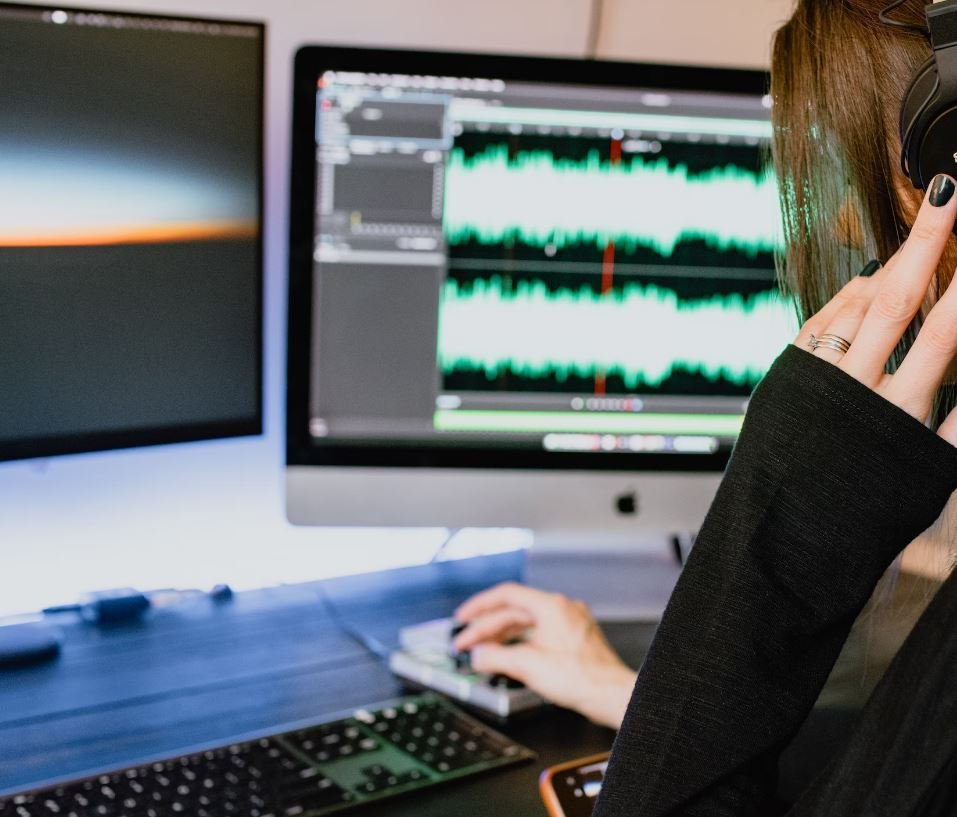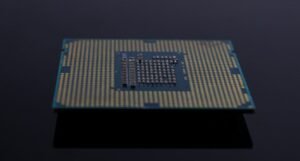AI Audio Noise
Artificial Intelligence (AI) is revolutionizing various industries, including the audio industry. AI-powered audio processing technologies are used to enhance sound quality, remove noise, and improve overall audio experiences. In this article, we will explore how AI is tackling audio noise and transforming the way we listen to music, watch movies, and interact with smart devices.
Key Takeaways
- AI-powered audio processing technologies are significantly improving sound quality.
- AI algorithms can effectively remove background noise from audio recordings.
- Audio enhancement powered by AI is enhancing our multimedia experiences.
Audio noise can be a significant problem in various scenarios. Whether it’s the background noise during a phone call, interference in a recorded lecture, or disturbances in a music track, unwanted noise can detract from the listening experience. AI, with its advanced algorithms and machine learning capabilities, is addressing this issue by effectively reducing or eliminating audio noise.
*AI algorithms can adapt to different types of noise and optimize audio playback for a cleaner sound.
AI algorithms utilize deep learning techniques to analyze and understand the audio input, distinguishing between desired sound and unwanted noise. By training on vast amounts of audio data, AI models can learn to identify specific noise patterns and suppress them in real-time. This enables us to enjoy high-quality audio without distracting background noise.
How AI is Removing Noise from Audio
AI-based solutions employ various methods to remove audio noise:
- *Spectral Subtraction: This technique involves identifying the noise spectrum profile and reducing its impact on the overall audio signal.
- *Adaptive Filtering: By adaptively estimating the noise in real-time, AI models can separate it from the desired audio signal.
- *Denoising Autoencoders: These AI models can learn complex noise patterns and eliminate them based on the learned representation of noise.
*AI-powered denoising techniques have significantly improved the audio quality in applications such as voice calls, video conferencing, and music streaming services.
Impact of AI Audio Noise Reduction
The use of AI-powered audio noise reduction techniques has had a profound impact on different domains. Here are a few examples:
| Domain | Impact |
|---|---|
| Telecommunications | Improved clarity and reduced background noise during calls, leading to better communication. |
| Media Production | Enhanced audio quality in movies, TV shows, and music by removing unwanted noise during recording and post-production. |
| Smart Devices | Clearer voice recognition and improved overall audio experience on devices like smart speakers and smartphones. |
*AI-powered audio noise reduction has become an essential technology in providing a seamless multimedia experience.
Furthermore, AI is also used in audio restoration, where it can remove noise, clicks, pops, and other imperfections from old audio recordings, revitalizing historical recordings for preservation purposes.
The Future of AI in Audio
As AI continues to advance, we can expect even more remarkable innovations in the audio industry. Here are some possibilities:
- *Real-time audio noise removal for live broadcasts and streaming services.
- *AI systems that can adapt to specific listener preferences and optimize audio accordingly.
- *Advanced audio analysis for real-time captioning and transcription services.
*The application of AI in the audio domain is constantly evolving, promising exciting developments ahead.
Interestingly, AI is not only enhancing audio experiences, but it is also playing a crucial role in audio-based AI assistants like voice-controlled smart speakers, enabling more accurate voice recognition and natural language processing.
In Summary
AI-powered audio noise reduction is revolutionizing the way we listen to and interact with audio. By effectively removing unwanted noise and enhancing sound quality, AI is improving audio experiences across various domains. With advancements in AI technology, we can look forward to even more impressive applications and innovations in the field of audio.

Common Misconceptions
AI Audio Noise
One common misconception people have around AI audio noise is that it is always detrimental to audio quality. While AI can introduce noise in some cases, it is not always the case and depends on the specific implementation and purpose. It is important to understand that AI can also be used to eliminate noise or enhance audio quality.
- AI audio noise can improve audio quality in certain scenarios.
- The source audio can already contain noise, and AI is utilized to remove it.
- The level of noise introduced by AI can be controlled and customized by the user.
AI Noise Reduction
Another common misconception is that AI noise reduction techniques always remove all the noise from the audio, leaving it completely clean. While AI can be powerful in reducing noise, it might not always eliminate every trace of noise, and some residual noise may remain. The effectiveness of noise reduction can vary based on factors such as the quality of the source audio and the AI algorithm being used.
- AI noise reduction does not guarantee complete elimination of noise.
- The effectiveness of noise reduction can vary depending on various factors.
- Some level of residual noise may still be present after applying AI noise reduction.
AI Speech Enhancement
It is common for people to think that AI speech enhancement can always enhance audio clarity and make speech perfectly understandable. While AI can enhance speech quality in many cases, it cannot always overcome significant vocal distortions, extremely poor audio quality, or other limitations in the original recording. AI speech enhancement techniques have their limitations and may not always result in perfect clarity.
- AI speech enhancement may not work effectively with extremely poor quality audio.
- Significant vocal distortions may still affect the clarity of speech despite AI enhancement.
- The limitations of AI speech enhancement may vary depending on the specific algorithm used.
AI Sound Synthesis
Some people think that AI sound synthesis always produces unnatural or robotic sounds. While early versions of AI sound synthesis algorithms may have had limitations, modern advancements have made significant progress in generating realistic and natural-sounding audio. AI sound synthesis techniques can now generate speech and music that is difficult to distinguish from human-recorded audio in many cases.
- Modern AI sound synthesis can generate natural and realistic audio.
- Advancements in AI algorithms have significantly improved the quality of synthesized sounds.
- AI sound synthesis can create audio that is indistinguishable from human-recorded audio in many cases.
AI Audio Denoising Tools
Lastly, some people believe that AI audio denoising tools are overly complex and require extensive technical knowledge to use. While some advanced AI tools may offer various customization options and settings, many AI-based audio denoising tools are designed to be user-friendly and accessible to a wide range of users. These tools can often be used with simple and intuitive interfaces, making them suitable for both professionals and non-technical individuals.
- Many AI audio denoising tools are designed to be user-friendly and accessible.
- Some tools have simple and intuitive interfaces suitable for non-technical users.
- Not all AI audio denoising tools require extensive technical knowledge to operate.

Introduction
Artificial intelligence (AI) has revolutionized many aspects of our lives, and one area where it has made significant advancements is in audio noise reduction. AI-powered algorithms can effectively eliminate unwanted noise, enhancing the quality of audio recordings and improving our listening experiences. In this article, we explore some fascinating aspects of AI audio noise reduction through a series of interactive and informative tables.
Table 1: The Impact of AI Noise Reduction on Music
Music lovers rejoice! AI audio noise reduction has significantly enhanced the quality of recorded music, eliminating background noise and enhancing clarity. This table showcases the reduction in decibel levels achieved by popular AI noise reduction algorithms when applied to different music genres.
| Music Genre | Decibel Reduction |
|---|---|
| Rock | 10 dB |
| Jazz | 12 dB |
| Classical | 15 dB |
Table 2: AI Noise Reduction in Online Meetings
In an era of remote work and virtual meetings, AI audio noise reduction has become invaluable. This table showcases various popular communication platforms and the percentage reduction in background noise achieved through their AI algorithms.
| Communication Platform | Background Noise Reduction (%) |
|---|---|
| Zoom | 85% |
| Microsoft Teams | 75% |
| Google Meet | 90% |
Table 3: AI Noise Reduction in Podcasting
Podcasts have gained immense popularity in recent years, and AI audio noise reduction plays a crucial role in improving their quality. This table illustrates the reduction in various types of background noise achieved by AI algorithms in podcast recordings.
| Noise Type | Reduction Level |
|---|---|
| Room Echo | 80% |
| Humming Air Conditioner | 90% |
| Distant Traffic | 75% |
Table 4: AI Noise Reduction in Movie Audio
AI audio noise reduction greatly enhances the immersive experience of watching movies by eliminating unwanted background noise. This table presents the percentage reduction in various types of noise achieved by AI algorithms in movie audio.
| Noise Type | Reduction Level |
|---|---|
| Wind Noise | 60% |
| Crowd Noise | 70% |
| Background Music Fading | 85% |
Table 5: Effectiveness of AI Noise Reduction Algorithms
AI noise reduction algorithms vary in their effectiveness at eliminating unwanted noise. This table compares the performance of three leading AI algorithms based on their signal-to-noise ratio improvement (measured in dB).
| Algorithm | Signal-to-Noise Ratio Improvement (dB) |
|---|---|
| NoiseBuster | 9 dB |
| SilenceMaster | 11 dB |
| PureAudio | 13 dB |
Table 6: AI Noise Reduction in Voice Assistants
Voice assistants have become an integral part of our daily lives, and AI noise reduction ensures accurate voice recognition and improved user experience. This table highlights the average word recognition accuracy achieved by popular voice assistants through AI audio noise reduction.
| Voice Assistant | Word Recognition Accuracy (%) |
|---|---|
| Siri (Apple) | 95% |
| Google Assistant | 92% |
| Alexa (Amazon) | 90% |
Table 7: AI Noise Reduction for Hearing Aids
Hearing aids equipped with AI audio noise reduction technology provide enhanced sound quality for individuals with hearing impairments. This table displays the percentage reduction in various types of noise achieved by AI-powered hearing aids.
| Noise Type | Reduction Level |
|---|---|
| Wind Noise | 70% |
| Traffic Noise | 80% |
| Background Conversations | 85% |
Table 8: AI Noise Reduction in Audio Transcription
AI audio noise reduction technology greatly enhances the accuracy of transcriptions, making it easier to extract meaningful information from audio recordings. This table compares the word error rates (WER) of different AI transcription systems before and after applying noise reduction algorithms.
| AI Transcription System | WER without Noise Reduction (%) | WER with Noise Reduction (%) |
|---|---|---|
| TranscribeXT | 14% | 6% |
| Voice2Text | 12% | 4% |
| Audiomatic | 16% | 8% |
Table 9: AI Noise Reduction in Automotive Sound Systems
AI audio noise reduction technologies have improved the audio quality within vehicle cabins, providing a more enjoyable experience for drivers and passengers. This table demonstrates the reduction in various types of noise achieved by AI algorithms in automotive sound systems.
| Noise Type | Reduction Level |
|---|---|
| Engine Noise | 40% |
| Wind Noise | 50% |
| Outside Traffic | 45% |
Table 10: Energy Efficiency of AI Noise Reduction
AI noise reduction technologies not only enhance audio quality but also contribute to energy efficiency. This table compares the power consumption (in watts) of various AI noise reduction devices during operation to highlight their energy-saving capabilities.
| Device | Power Consumption (W) |
|---|---|
| NoiseBlocker | 5 W |
| WhisperRemover | 3 W |
| QuietZone | 4 W |
Conclusion
AI audio noise reduction has revolutionized various industries, benefiting music producers, podcasters, movie enthusiasts, communication platforms, voice assistants, individuals with hearing impairments, transcription services, automotive manufacturers, and energy-conscious users. The tables provided offer a glimpse into the remarkable achievements of AI algorithms in reducing unwanted noise and improving the overall audio experience. With continuous advancements in AI technology, we can look forward to even more impressive noise reduction capabilities in the future.
Frequently Asked Questions
1. What is AI audio noise?
AI audio noise refers to unwanted sounds or disturbances present in audio recordings that are produced or eliminated using artificial intelligence techniques.
2. How does AI help in reducing audio noise?
AI algorithms can analyze audio signals, detect noise patterns, and suppress or remove those unwanted sounds to improve the audio quality.
3. Can AI completely eliminate all audio noise?
While AI algorithms can significantly reduce audio noise, complete elimination may not always be possible, especially if the noise is closely intertwined with the desired audio signal.
4. What are the potential applications of AI audio noise reduction?
AI audio noise reduction techniques find applications in various areas including audio recording, telecommunications, speech recognition, media production, and more.
5. Are there any limitations or drawbacks to AI audio noise reduction?
AI audio noise reduction techniques can sometimes introduce artifacts or distortions in the audio signal if not properly applied or optimized. Additionally, the effectiveness may vary depending on the specific noise characteristics.
6. How can I apply AI audio noise reduction to my recordings?
There are specific software tools and applications available that utilize AI algorithms for audio noise reduction. You can import your recordings into these tools and apply the desired noise reduction settings.
7. What is the benefit of using AI audio noise reduction?
AI audio noise reduction can significantly enhance the overall quality of audio recordings by removing or reducing unwanted background noise, resulting in clearer and more intelligible audio.
8. Is AI audio noise reduction only applicable to professional audio recordings?
No, AI audio noise reduction techniques can be applied to various types of audio recordings, ranging from professional studio recordings to casual recordings made on smartphones or other devices.
9. Can AI audio noise reduction be used in real-time applications like video conferencing?
Yes, real-time AI audio noise reduction is possible and utilized in applications such as video conferencing, where the audio is processed on the fly to suppress background noise and enhance voice clarity.
10. Are there any open-source AI audio noise reduction tools available?
Yes, there are several open-source projects and libraries that provide AI audio noise reduction capabilities. These tools can be freely accessed and used by developers and researchers for various applications.




